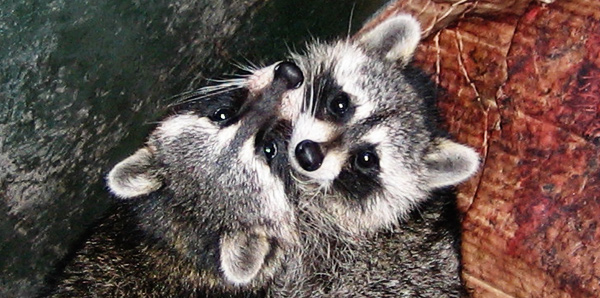- info@wildlifeanimalcontrol.com
Call us for help in your town
Wildlife Control Education
What are raccoons' mating habits?
Raccoons are commonly found in the region of North America and actually this one is a medium sized mammal, which is getting extremely popular in the urban environments. The normal length of their body is 40-70 cm and weight of body is 3.5-9 kilograms. The coat is of grey color and includes denser under fur, which provides protection against extremes of cold. The best noted aspect related with these animals is that they are popular for their intelligence and studies depict it that animals have the potential of remembering the solutions related with different problems up to a period of three years. They are omnivorous and can comfortably adjust in majority of environments as it is very rare that they find any shortage of food. Originally raccoons used to live in mixed forests, but because of the flexibility and higher level of adaptability, which is present in their nature they are now more commonly seen in urban areas and majority of homeowners these days regard them as pests. The question, which is often asked by majority keeping in consideration the diverse lifecycles of raccoons, is that what is a raccoon’s mating habits? In this section our main focus will be upon this particular topic.

It is normal for raccoons to mate in periods that are triggered by increasing daylight between the months of January and mid of March. But important point to mention here is that larger differences based on regions are present, which are not entirely influenced by the solar circumstances. As an example you can consider the point raccoons present in states of south generally mate late than the standard. A study, which was conducted in the South of Texas during the prominent mating seasons from 1990-1992 showed that almost 1/3 of females with males (more than one).
The gestation period is 63-65 days and after that 2-5 young ones are born and the average size of litter varies widely according to the habitat and it will range from 2.5 in the region of Alabama to almost 4.8 in the Northern Dakota. The areas where mortality rate is higher large litters are common. Males play no particular role in taking care of young ones it is the responsibility of females. At the time of birth the weight is 60 to 75 grams. At the time of birth the newborns are blind as well as deaf and fur is extremely light. After reaching maturity the grownups split. Many of the females stay closer to the residence of their mother, but males can move to a distance of 20 kilometers or more. It is taken as instinctive behavior, which prevents interbreeding. In this manner the cycle continues for the rest of life of the raccoon.
Go back to the How to get rid of raccoons home page.
Need raccoon removal in your hometown? We service over 500 USA locations! Click here to hire us in your town and check prices - updated for year 2020.

















